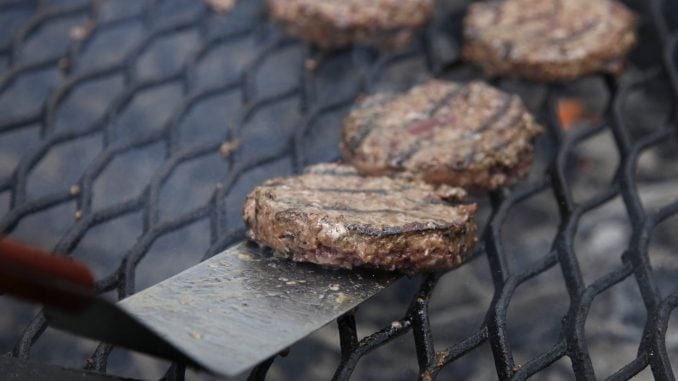
I love to grill, and barbecue, and I have devoted my career to outdoor cooking for more than two decades. In that time, I’ve seen a lot of mistakes and people tend to make them over and over. So I put together a list of the biggest grilling don’ts and how to avoid them. Print this list and refer it the next time you get ready to grill!
NEVER OIL THE GRILL
Many people oil the cooking grates — big blunder! Follow my mantra: “Oil the food, not the grates!” If you brush oil on hot cooking grates (and a lit grill), you run the risk of a big flare-up. The oil that you have brushed on will instantly burn leaving a sticky residue that will “glue” your food to the grates, making it stick, break apart and dry out_like dehydrating food. If you oil the food, it will stay juicy, promote caramelization_those great grill marks! And help to prevent “stickage.”
DON’T PUT FOOD ON A COLD GRILL
Always preheat a gas grill with all burners on high or wait until charcoal briquettes are covered with a white-gray ash. Preheating also burns off residue and makes it easier to clean the grill. Contrary to popular belief, you don’t ever need to cook on a grill that is hotter than 550 F. The hotter the grill, the more likely you will burn the outside of the food before the inside is cooked.
CLEAN THAT DIRTY GRILL
An outdoor grill is like a cast-iron skillet. It gets better and better the more you use it, but you do need to clean it every time you use it. Clean the grill grates twice every cook-out with a stiff metal bristle grill cleaning brush_before and after you cook. If you do this, it will never be a big job to clean your grill. If you don’t have a grill cleaning brush, crumble a ball of heavy-duty aluminum foil and hold it in a pair of 12-inch locking chef tongs to use to clean the grill.
KNOW THE DIFFERENCE BETWEEN DIRECT AND INDIRECT HEAT
The most frequent mistake is to choose the wrong cooking method. To be a good griller, you must know the difference between direct, indirect or combo grilling and when to use them. Direct grilling means that the food is set directly over the heat source — similar to broiling in your oven. Indirect grilling means that the heat is on either side of the food and the burners are turned off under the food — similar to roasting and baking in your oven. Combo grilling means that you sear the food over direct heat (i.e., to sear a tenderloin, or large steak) before moving it to indirect heat to finish the cooking process. Remember this general rule of thumb: If the food takes less than 20 minutes to cook, use the DIRECT METHOD. If the food takes more than 20 minutes to cook, use the INDIRECT METHOD.
THE RIGHT WAY TO DEAL WITH FLARE-UPS
Never use a water bottle to extinguish a flare-up. Spraying water on a hot fire can produce steam vapors which may cause severe burns. The water can also crack the porcelain-enamel finish, resulting in damage to your grill. Fire loves oxygen, so cook with the lid down and don’t peek. Repeatedly lifting the lid to “peek” and check the food while it’s cooking lengthens cooking time. If you have a full-on fire, turn all the burners off, remove the food and extinguish the flames with kosher salt or baking soda. In a worst-case scenario, use a fire extinguisher but know that it will ruin your grill.
AVOID FREQUENT FLIPPING
If you are cooking food by the direct method (hamburgers, hot dogs, boneless chicken breasts, small steaks, vegetables, etc.), flip only once halfway through the cooking time. All protein will stick to the grates as soon as it makes contact with the hot grill grates. As it cooks, it will naturally release itself, and that is when you can turn it over with a pair of tongs. Just remember to oil the food, not the grates!
DODGE CROSS-CONTAMINATION
One of the most common mistakes backyard cooks make is using the same tongs for raw and cooked foods. This creates cross-contamination and can result in food-borne illness. It’s easy to fix this problem. I have been color-coding my 12-inch locking chef tongs with red and green duct tape for as long as I have been grilling. The different colors help me to remember which pair of tongs I used for raw food (red), like chicken, and which are safe to use for the cooked food (green). And remember to use a separate clean platter for your cooked food, too.
DON’T SAUCE TOO SOON
If I had a dime for every time I saw someone pour thick sweet barbecue sauce on bone-in-chicken pieces or a whole rack of ribs while they were raw, I would be a very wealthy griller! All barbecue sauces have a lot of sugar in them and sugar burns very quickly. Almost always burning the outside of the food before the inside cooks. Generally I only brush food with sauce during the final 10-15 minutes of cooking time. With ribs that cook 2-3 hours, I will brush with a diluted sauce (1/2 beer and 1/2 sauce) for the final 30 minutes of cooking time.
RESIST TESTING FOR DONENESS BY CUTTING.
Cutting your food to test for doneness is another common way people bungle their food. When you cut any protein, you are letting the precious juices escape and if the food is under-cooked, the area where it was cut will be over-cooked when you put it back on the grill. Use an instant-read meat thermometer to test for doneness, and always let your food rest for at least 5 minutes before cutting into it.



